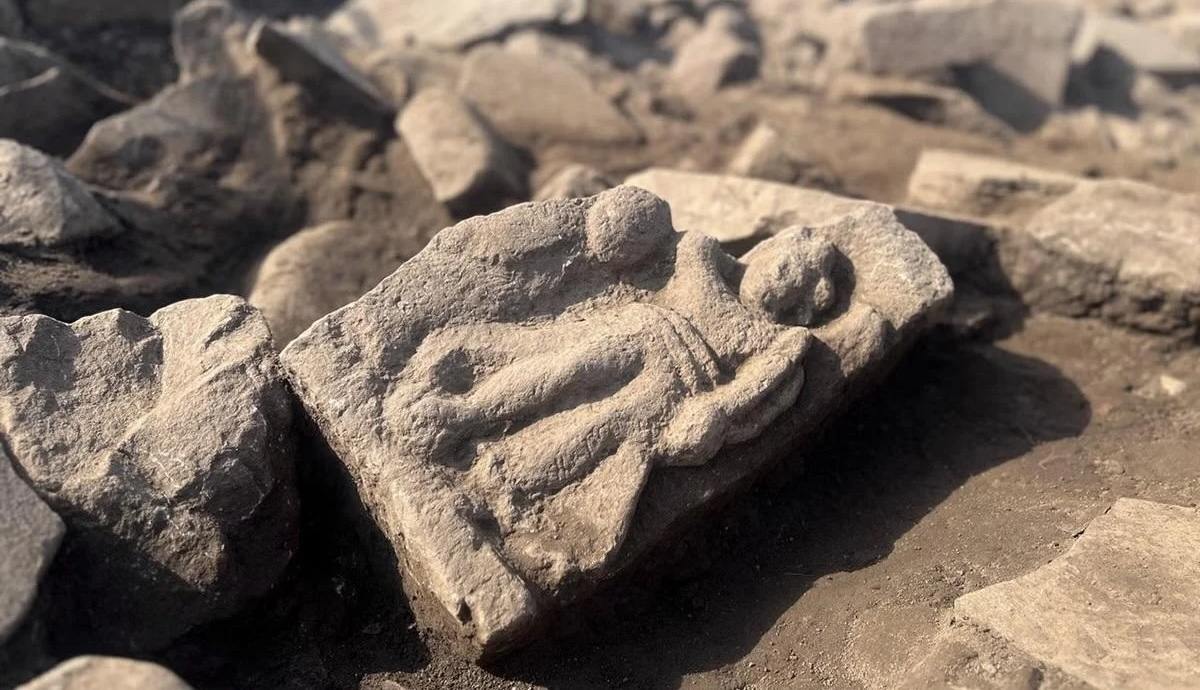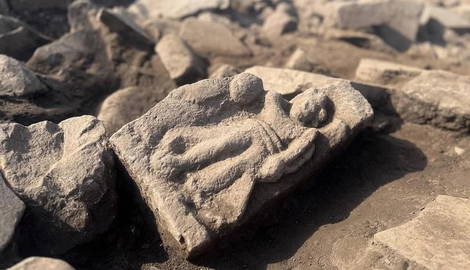
Ongoing excavations at Vindolanda, an ancient Roman fort just south of Hadrian’s Wall, recently revealed a rare find. A relief sculpture depicting Victoria, the Roman goddess of victory, was unearthed by a married couple who are longtime volunteers at the northern England excavation site.
“Finds Like This Are Increasingly Rare”

Jim and Dilys Quinlan made the discovery earlier this month while volunteering at the Vindolanda site. It was the couple’s 21st year taking part in the excavation program. They found the 18.5-inch sandstone relief sculpture repurposed within a layer of rubble over the remains of Roman infantry barracks. The winged female figure was identified as the Roman goddess Victoria. According to experts, the Victoria relief once belonged to a larger monument adorning the barracks. In its original state, it was also likely painted in vibrant colors.
“Finds like this are increasingly rare these days from Roman Britain,” said Andrew Birley, director of excavations at the Vindolanda Trust. “The beautifully carved figure vividly reminds us that Roman forts were not simply utilitarian; they had grandeur, and of course, the symbolism was a vital part of the culture here for the soldiers almost 2,000 years ago.”
Victoria, the personification of victory, is the Roman counterpart of the Greek goddess Nike. Highly revered in ancient Rome, Victoria represented divine favor and military success. Her inclusion in a monument at the Vindolanda site likely coincides with the end of the Severan Wars in Roman Britain. The symbolic relief sculpture is now set to go on public display in early 2026 at the Vindolanda Museum as part of its Recent Finds exhibition.
The History of Vindolanda and Hadrian’s Wall

Hadrian’s Wall is a 73-mile-long Roman fortification located in northern England, near the modern-day border with Scotland. Emperor Hadrian ordered its construction after visiting Britain in 122 CE. The wall stretches across the width of the island, from Wallsend on the River Tyne in the east to Bowness-on-Solway on the Solway Firth in the west. An imposing stone wall with large ditches in front of and behind it, it functioned as the northwest frontier of the Roman Empire for nearly three centuries.
To the south is Vindolanda, a Roman auxiliary fort whose first iteration predates Hadrian’s Wall. Archaeological evidence shows that the fort was under Roman occupation between 85 CE and 370 CE. Today, as an active excavation site, Vindolanda offers insights into the people who worked and lived near the famed wall nearly two millennia ago.









